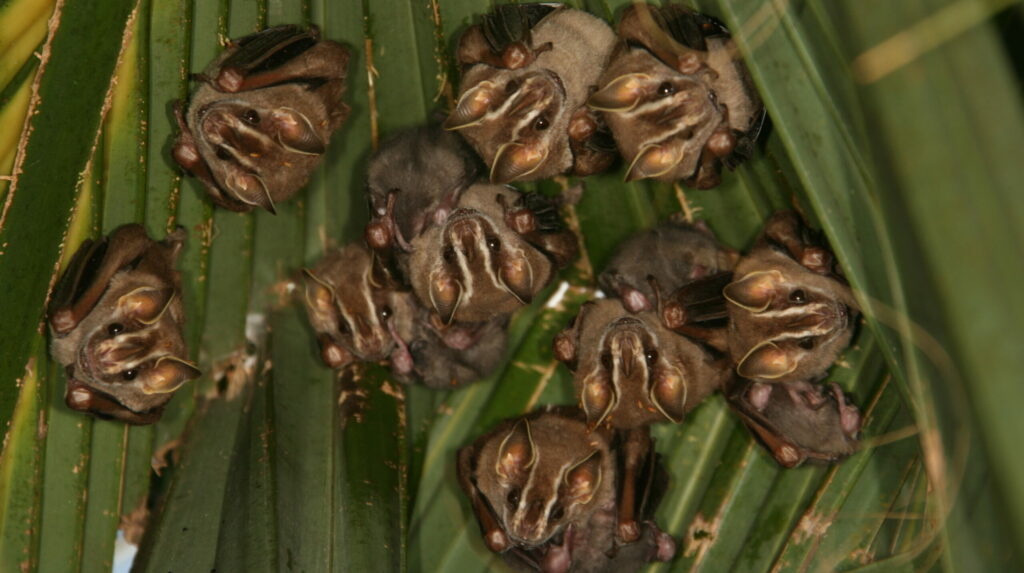Artificial intelligence and bats – learning how bats fight off parasites

Experts at FAU conduct research into the immune reaction of bats in conjunction with Nuremberg Zoo
Whether by rubbing themselves with ants or eating grass, many species of animal know what to do if they are sick or have parasites, and this is probably also true of bats. How exactly they fight off viruses and bacteria and which methods or plant compounds they use to do so has not yet been investigated. This will now be the subject of research carried out by Matthias Zürl and Julian Deyerler from the Machine Learning and Data Analytics Lab (Prof. Dr. Björn Eskofier) at Friedrich-Alexander-Universität Erlangen-Nürnberg (FAU) in conjunction with researchers at Nuremberg Zoo. The research project will run for three years and is being funded with a total of 1.2 million dollars by the Human Frontiers Science Program.
About a year before funding was approved, Julian Deyerler from the Machine Learning and Data Analytics Lab began developing a wing scanner for bats in conjunction with Dr. Ralph Simon, who is a bat expert at Nuremberg Zoo, with the aim of being able to recognize animals using individual characteristics on their wings. “We want to use the patterns of blood vessels and collagen on the bats’ wings as a type of fingerprint so that we can tell the animals apart from each other,” says Deyerler. “This method is non-invasive and thus does not harm the animals.”
Up to now, animals were only identified by attaching metal or plastic rings to their arms or by fitting them with transponders. The newly-developed camera based system, however, records the bats while hovering when feeding on nectar and scans the individual structures on their wings.

“We use a neural network for this that we initially train using images of animals we are already familiar with. This then enables the system to make simple decisions, for example, whether two images show the same bat. It is able to recognize the individuals on new images. This is what we call ‘Re-ID’,” says Deyerler.
The ability to find and recognize individual bats will be decisive for the researchers as the project progresses since they would like to find out whether animals that eat certain plants or insects have fewer parasites than others. They are focusing on fruit-eating leaf-nosed bats that come from the same family as the bats in the manatee house at Nuremberg Zoo.
Next stop: The rainforest of Central America
During the next phase of the project, Deyerler and Simon will travel to Barro Colorado Island for four weeks, an island on Gatun Lake, which is part of the Panama Canal. With disease ecologists from the University of Oklahoma and Ukrainian students and scientists from the Ukrainian Bat Rehabilitation Center, they first intend to make an assessment of the current situation to find out which condition the leaf-nosed bats that live on the island are in.
This will involve trapping some individuals, taking some blood and fur samples and then releasing the animals. Feces samples will provide the researchers information about what the animals have been eating. Although the animals will initially be caught by hand, in the long-term, recognizing individuals using FAU’s wing scanner will become essential since this is the only way the researchers can track the animals’ health over a longer period of time.
During the coming years, the scientists hope to repeatedly determine the animals’ immune status and also find out which fruits the bats choose. One of their goals is to find out whether these fruits contain secondary plant compounds. These compounds are not essential to a plant’s survival, but can, for example, have an anti-bacterial effect. This is true of caffeine in the fruits of the coffee tree.
“We would like to investigate how the animals pass on information about certain fruits,” says Ralph Simon. “Is this innate knowledge, do they communicate with each other about it, or do they learn by observing other older animals?” As a bat expert and fan of bats, he regards the project as a huge opportunity. “It is not only an opportunity to gain new insights that could be relevant for medicine, but we can also learn a great deal more about the ecology of fruit-eating leaf-nosed bats and thus gain a better understanding of their often completely unknown way of life.”
Further information
Julian Deyerler
Machine Learning and Data Analytics Lab
Dr. Ralph Simon
Nuremberg Zoo